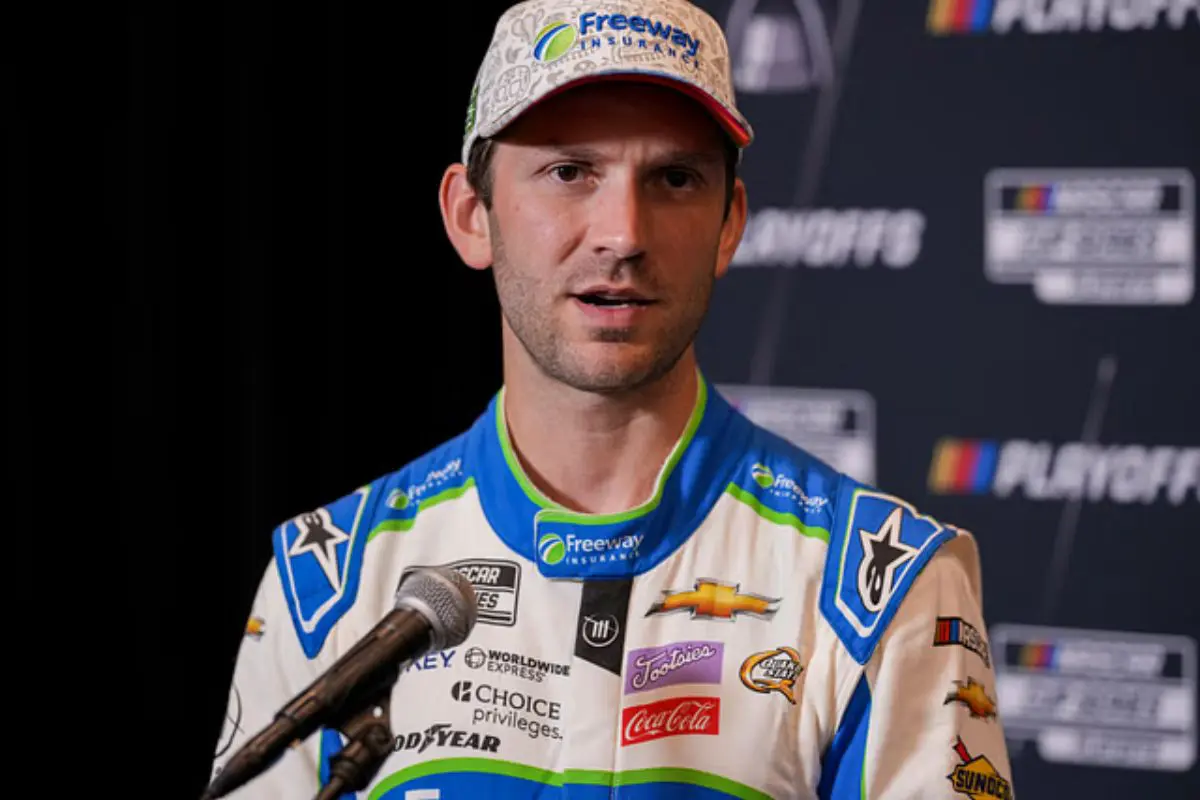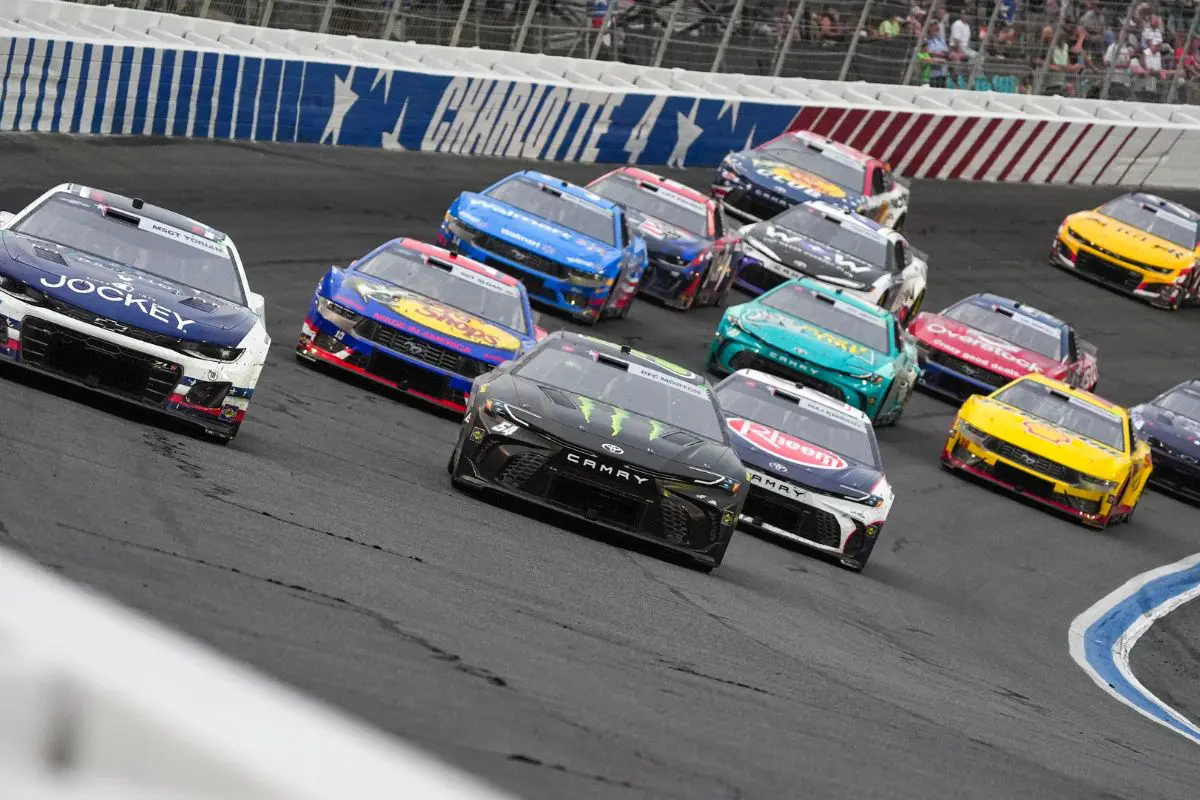Daniel Suarez’s Atlanta Heartbreak: Daniel Suarez‘s recent experience at the Atlanta race encapsulates the intricate dynamics of teamwork in motorsport, particularly the essential role of drafting partnerships. The absence of teammate Ross Chastain during the significant closing laps not only stripped Suarez of critical support but also highlighted how quickly fortunes can shift in high-stakes racing environments. As he navigated the track alone following the caution, the implications of this isolation became glaringly apparent, transforming a promising performance into a near-miss. What lessons can be drawn from this sad moment, both for Suarez and his team moving forward?
Key Highlights
- Daniel Suarez’s strong performance saw him gain 28 positions, showcasing his tenacity throughout the race.
- A strategic partnership with teammate Ross Chastain provided crucial drafting support before the overtime restart.
- Loss of Chastain’s partnership post-restart left Suarez vulnerable, impacting his chances for victory.
- Unforeseen factors, including mechanical issues and changing race dynamics, contributed to Suarez’s challenging finish.
- Despite the disappointment, Suarez’s positive mindset and tactical decisions highlight his potential for future success.
Disruption and Overtime Challenges at the Quaker State 400
The Quaker State 400 was a race that vividly illustrated the unpredictable nature of motorsport, particularly when disruptions occur late in the competition. The abrupt decision to call a caution due to a loose Walmart banner with just ten laps remaining transformed the race dynamics, leading to a restart that would ultimately shape the outcome for several competitors, including Daniel Suarez.
This caution not only interrupted Suarez’s momentum but also introduced a heightened tension that is characteristic of NASCAR’s overtime format. In motorsport, the stakes are perpetually high, but the necessity of adapting to unforeseen circumstances can make or break a driver’s race.
Suarez, who had been performing commendably and was gaining ground on the leaders, suddenly found himself at a disadvantage as the race shifted into overtime. The five-lap sprint, meant to create an exhilarating finish, instead became a battleground where Suarez’s rhythm faltered.
Despite his earlier skill at Atlanta, where he had secured his playoff berth earlier in the season, the altered race conditions conspired against him. The contrast of his earlier performance and the challenges posed by the caution period highlights a critical truth in racing: success is often ephemeral and contingent upon factors beyond a driver’s control.
This sad moment for Suarez serves as a reflection of the sport’s inherent unpredictability and the relentless nature of competition, leaving fans and competitors similarly to ponder the thin line between victory and heartbreak.
Suarez’s Performance and Chastain’s Role
Throughout the Quaker State 400, Daniel Suarez exhibited remarkable tenacity, gaining an impressive 28 positions and positioning himself as a serious contender in the final laps. This ascendance was not merely a product of his driving skill; it was also a demonstration of the tactical partnership forged with his teammate, Ross Chastain. Their collaboration on the track highlighted the importance of teamwork in NASCAR, particularly in a high-stakes environment like Atlanta.
Chastain’s role became essential as he provided Suarez with a significant push in the laps leading to the restart. This assistance enabled Suarez to maintain momentum and compete effectively against seasoned drivers like Joey Logano. As noted by Suarez himself, the support from Chastain was instrumental, particularly through the vital corners of the track. “I mean, yeah, that was the case, but I can thank the one and off because he pushed me very, very well in the restart—all the way through one and two, all the way through three and four. He kept me in position, and we were right there in the fight.” He remarked, highlighting the synergy that had developed between the two drivers.
"Maybe there was a couple of things I could've done better."@Daniel_SuarezG discusses the overtime finish wanting to be in victory lane after runner-up finish at Atlanta.
📹: @TheBryanNolen pic.twitter.com/3Se8lGT5Fa
— Frontstretch (@Frontstretch) September 9, 2024
However, the dynamic shifted dramatically post-restart. The nature of racing dictates that such partnerships can be fleeting, and once the green flag waved, Chastain could no longer assist Suarez.
This abrupt shift from collaboration to competition exemplified the inherent challenges of NASCAR, where alliances can dissolve in an instant, leaving drivers to navigate the complexities of the race on their own. Ultimately, while Suarez’s performance was commendable, the loss of his “dancing partner” proved detrimental as he sought to clinch victory amidst heightened competition.
Challenges After the Restart
Facing the stresses of competition, Suarez quickly realized the challenges that arose after the restart. The dynamics of racing at the Atlanta Motorspeedway shifted dramatically when he lost his significant partnership with Ross Chastain. In the high-stakes environment of NASCAR, a driver’s ability to maintain momentum is often predicated on the cooperation of fellow competitors. Chastain had provided essential pushes that positioned Suarez favorably, but the sudden disruption of this alliance left him vulnerable.
Suarez’s insight into the mechanics of drafting became painfully evident when he remarked, “I was timing, you know, the second push, and once I got the second push, I lost him.” This acknowledgment highlights a fundamental aspect of racing strategy: the interdependence of drivers. The loss of Chastain, whether due to mechanical issues like a flat tire or another unforeseen factor, not only stripped Suarez of his immediate ally but also diminished his competitive edge.
Without the benefit of a drafting partner, he faced an uphill battle against the field, ultimately recognizing that his prospects for victory had dissipated.
Despite the challenges post-restart, Suarez expressed pride in his team’s efforts and their historical performance at Atlanta. His strong track record, having consistently finished in the top two over recent years, emphasizes his potential.
However, the harsh reality of racing is that even the most talented drivers can find themselves at the mercy of circumstances beyond their control, leaving them to navigate not just the track, but the unpredictable landscape of competition itself.
Suarez’s Reflections on the Race
Reflecting on the race, Suarez acknowledged the bittersweet nature of his performance at Atlanta. While a runner-up finish is commendable and provides valuable playoff points, the driver could not shake the nagging disappointment of missing out on victory. “Kind of stinks that we’re not in Victory Lane. I felt like we were in a position to do that, but that’s part of racing.” he remarked, capturing the essence of a competitor’s mindset.
Suarez’s reflections reveal a deeper understanding of the intricacies of racing, where emotions and outcomes often collide. He highlighted three key aspects of his experience:
- Positioning: Feeling confident in his car’s performance, Suarez believed he was tactically poised to seize the win.
- Mindset: Despite his disappointment, he maintained a positive outlook, recognizing that this result could serve as a good springboard for the playoffs.
- Weather Influence: His preoccupation with the changing weather conditions emphasizes the unpredictable nature of racing, which can shift dynamics in an instant.
Although he scored the second-highest points at Atlanta, Suarez emphasized that his focus was not solely on the standings. His frank acknowledgment that this is “all part of racing” encapsulates a profound insight into the sport’s emotional rollercoaster.
For Suarez, the expedition continues, fueled by the lessons learned and the relentless pursuit of that elusive top-place finish. As he moves forward, the balance between aspiration and reality will shape his approach in the upcoming races.
Strategic Decisions and Future Outlook
How can tactical decisions shape a driver’s path in high-stakes races? In the domain of motorsports, the ability to make swift and informed tactical choices can often dictate the outcome of a race. Daniel Suarez’s decision to race in the outside lane at the Quaker State 400 exemplifies this principle. Faced with the challenge of old tires, his tactical maneuver not only demonstrated his skill but also positioned him favorably against formidable competitors like Joey Logano.
Suarez’s performance, despite the heartache of narrowly missing victory, offers critical insights into his approach for future races. His acknowledgment of Logano’s racing talent reflects a tactical mindset, emphasizing the importance of recognizing and adapting to other drivers’ strengths.
Moving forward, Suarez must harness this experience, leveraging it to refine his competitive approach in the playoff races ahead. The lessons learned from Atlanta could serve as a catalyst for growth as Suarez prepares for upcoming challenges.
News in Brief: Daniel Suarez’s Atlanta Heartbreak
The Atlanta race exemplifies the critical role of teamwork and tactical collaboration in motorsport. The absence of Ross Chastain, Suarez’s key ally, during the final stages profoundly impacted the dynamics of the race. This isolation not only curtailed Suarez’s drafting advantages but also illuminated the inherent unpredictability of racing. Moving forward, the importance of cohesive team tactics will remain paramount, as the pursuit of victory hinges on both individual skill and collaborative synergy on the track.
ALSO READ: Daniel Suárez Runner-Up Finish at Atlanta: Looking Beyond the Near Victory




